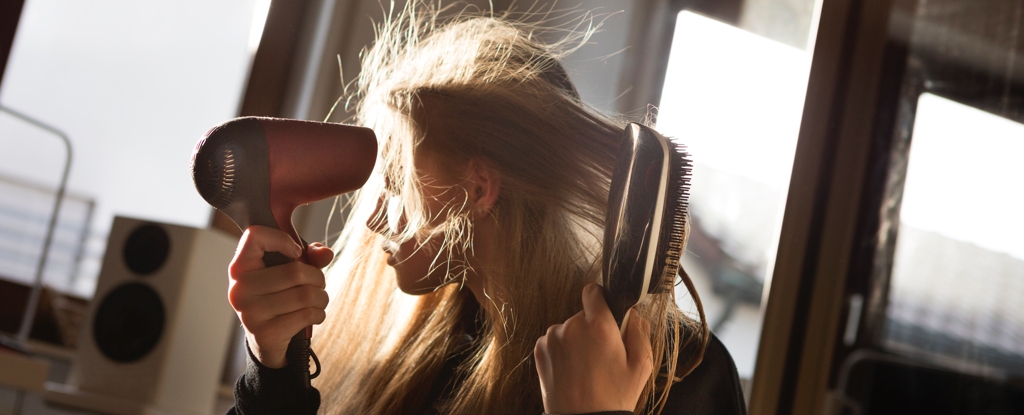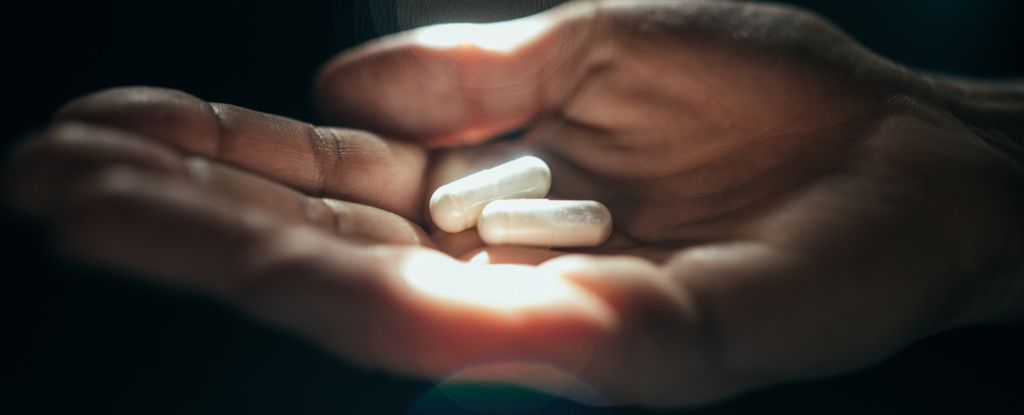Our quest for shiny, frizz-free hair using oils, gels, and sprays may come with a hidden health cost: releasing potentially harmful compounds, especially when paired with heat styling tools.
Researchers in the US studied volatile organic compounds (VOCs), like siloxanes, emitted during various home hairstyling routines.
Not only can certain hair care contribute to inhalation of VOCs inside homes, their analysis suggests it can also impact outdoor air quality through ventilation systems.
While we don’t know the full extent of the health impacts of inhaling these chemicals, it’s unlikely they’re doing us good.
“We found the results to be extremely alarming,” says civil engineer Nusrat Jung from Purdue University.
“We did not expect to see such significant emissions of volatile chemical mixtures from off-the-shelf hair care products during typical hair care routines that many people perform each and every day.”
Jung and her colleagues used a ventilated ‘tiny house’ laboratory to conduct 46 experiments as adults aged 18 to 65 used different combinations of products and styling tools to mimic their at-home hair care routines.
Prior to, during, and after each hair care session, an advanced mass spectrometer measured the indoor air VOC concentrations.
The researchers looked at the relationship between the temperature of the styling tools and VOC emissions, as well as how ventilation conditions and hair surface area affected the results.
They focused on cyclic volatile methyl siloxanes (cVMS), which are common in hair care products. Overall, the results showed that higher styling tool temperatures and hair with more surface area were associated with increased VOC emissions.
“Hair care product use drove rapid changes in the chemical composition of the indoor atmosphere,” the team writes.
“cVMS dominated VOC emissions from hair care product use, and decamethylcyclopentasiloxane (D5) contributed the most to cVMS emissions.”
D5 is popular in hair styling products because it’s stable at high temperatures and has a smooth texture.
frameborder=”0″ allow=”accelerometer; autoplay; clipboard-write; encrypted-media; gyroscope; picture-in-picture; web-share” allowfullscreen>
“D5 siloxane has been found to lead to adverse effects on the respiratory tract, liver and nervous system of laboratory animals,” Jung says. “The use of the chemical in wash-off cosmetic products has already been restricted in the European Union because of this.”
More in-depth studies on people are needed to fully understand the health implications. The long-term human impact of inhaling VOCs, especially from leave-on products, has seen minimal testing compared to wash-off products like shampoos.
Measurements showed a person could inhale as much as 20 mg of D5 daily. The majority of D5 was removed from the room in about 20 minutes after a hair care routine using ventilation.
“Our model shows that turning on the bathroom exhaust fan can reduce D5 inhalation exposures by over 90 percent,” says first author of the study, civil engineer Jinglin Jiang from Purdue University.
However, that increases its environmental impact. With the exhaust fan on, the cumulative indoor-to-outdoor D5 emission was higher in one hour than in three hours without fan use.
“Based on surveys on hair care product usage patterns and assuming that 10 percent of HCPs are siloxane-based, the total indoor-to-outdoor emission of D5 could reach 0.4 to 6 tons per year in the US,” the authors write.
Jung explains that just as exhaust fans can release VOCs into the atmosphere, ventilation systems can circulate these chemicals back into buildings.
“So even if using products with harmful chemicals is not part of your hair care routine, you will still be impacted due to your surroundings in an urban environment,” she says.
There are still limitations in modeling inhalation and indoor-to-outdoor emissions, the researchers emphasize, and of course, wide variations in individual hair care habits, as well as exposure, based on indoor surfaces and space.
The team notes that staying in the same room after hair styling increases exposure to VOCs. So if your hair needs products and heat styling, leaving the room immediately afterwards could help reduce your exposure.
“The best solution is to simply not use these products,” Jung recommends.
“The effects on people and the planet need to be studied further and regulatory action needs to be taken.”
The study has been published in Environmental Science & Technology.





